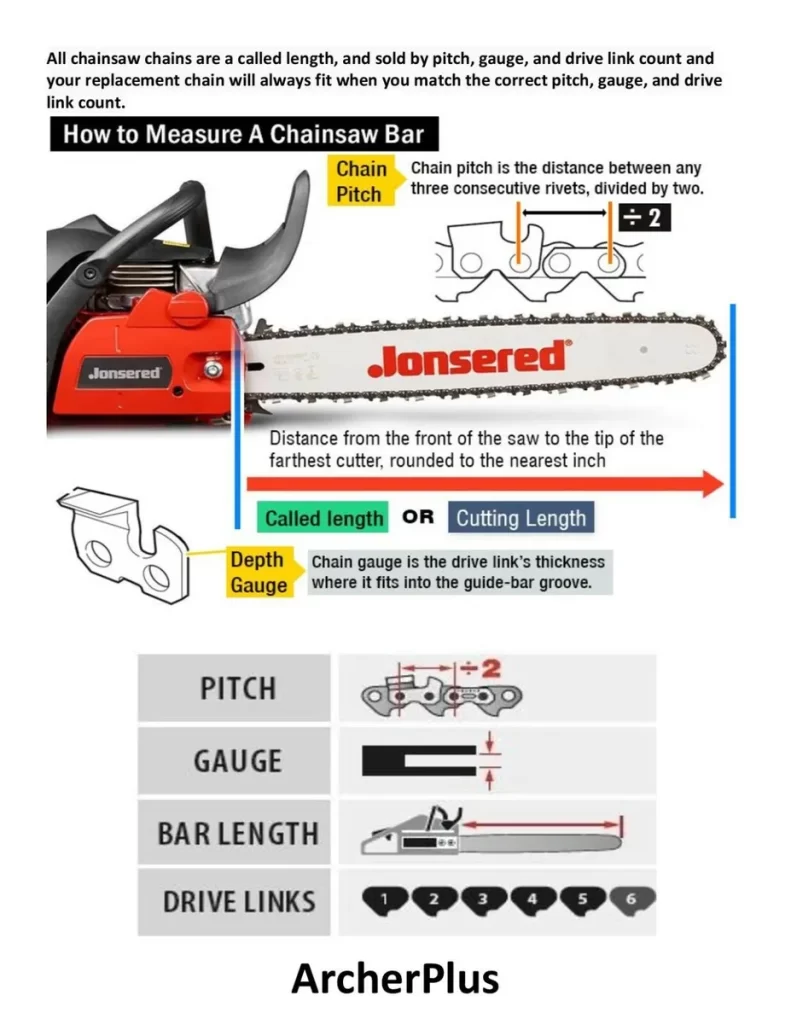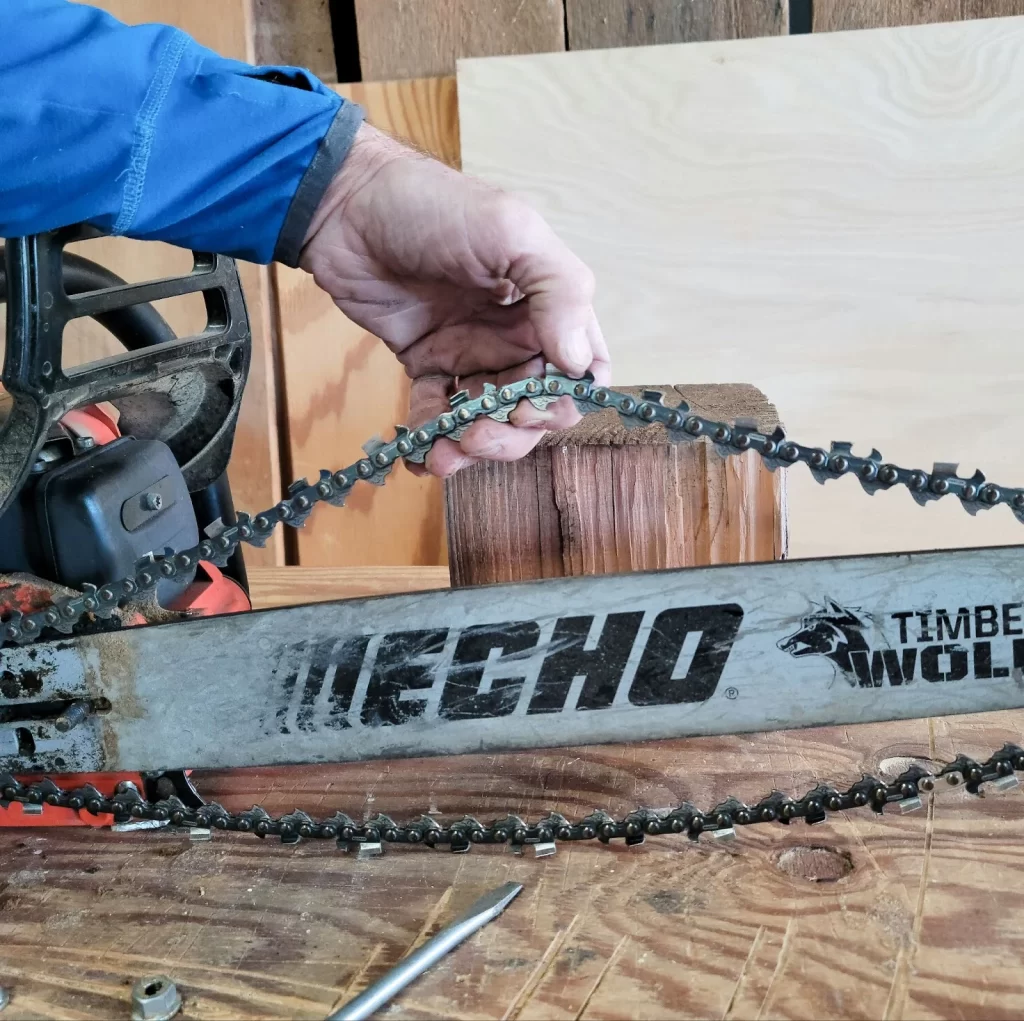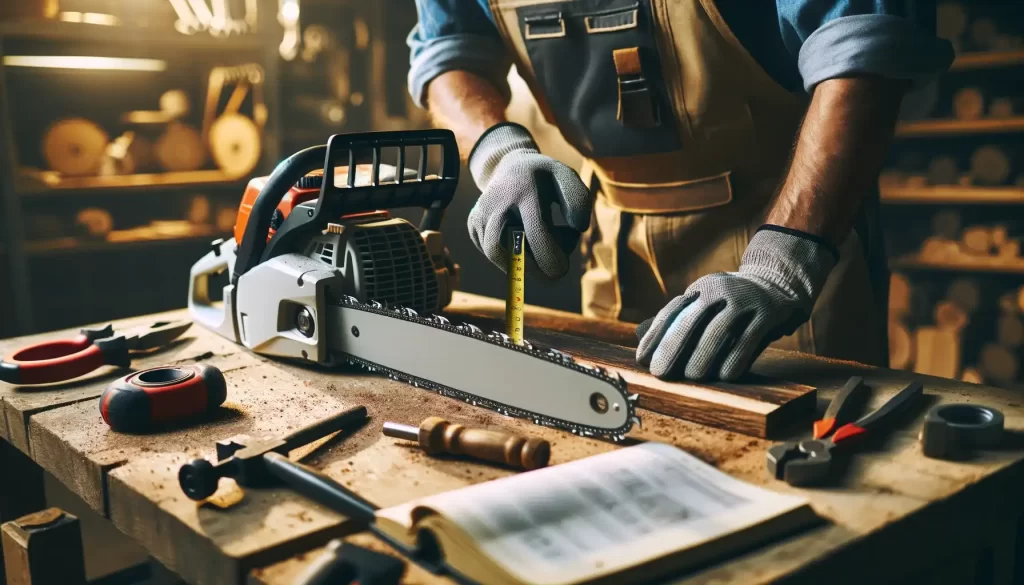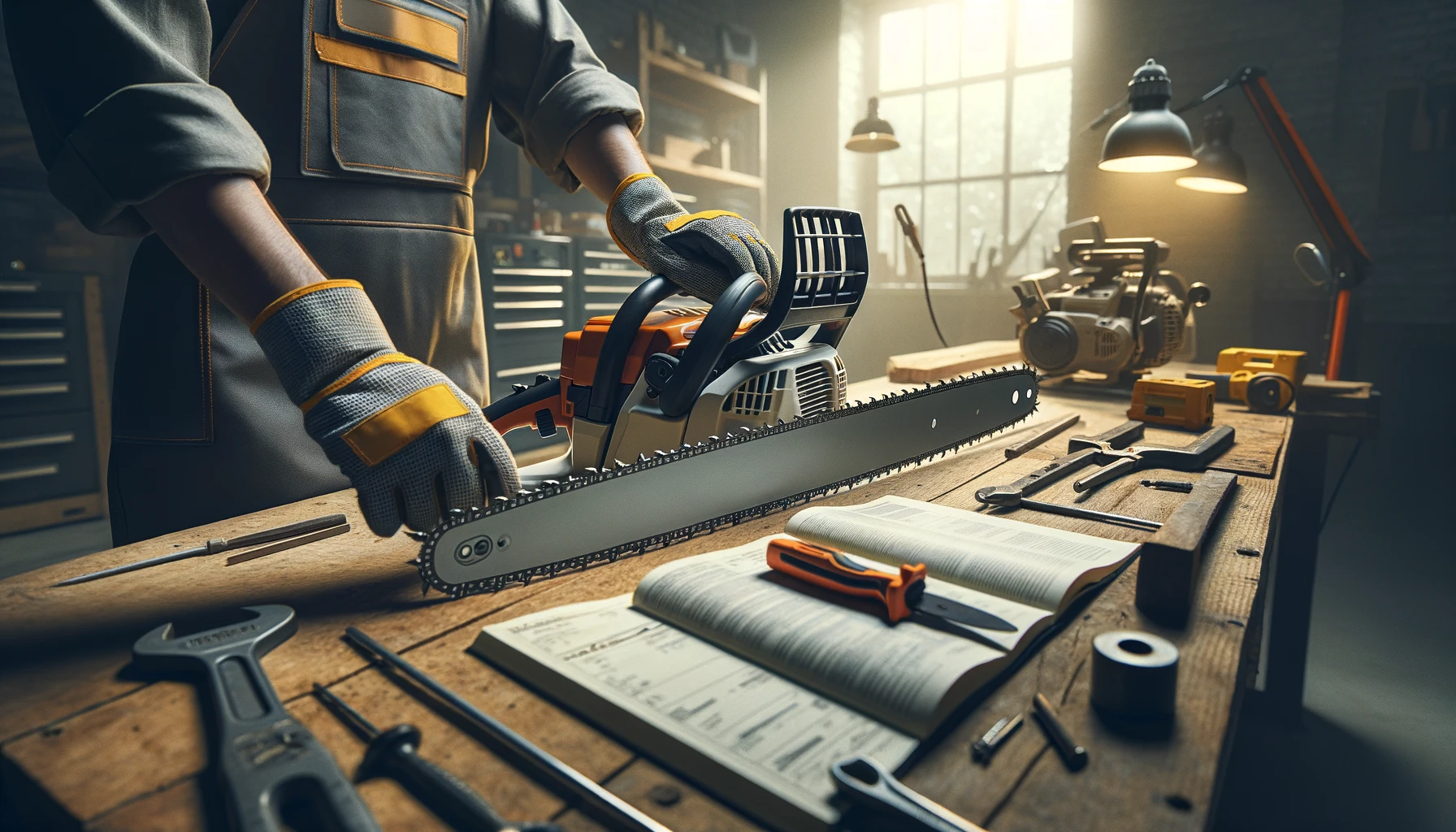To measure a chainsaw bar, measure from the front tip to the point where it enters the housing. Use a tape measure for accuracy, ensuring it aligns with the cutting length.
Measuring a chainsaw bar is a straightforward task crucial for maintenance and when preparing to purchase replacement parts. Every chainsaw bar has a defined length that determines the size of material it can cut. Knowing this measurement helps operators select the appropriate chainsaw for their needs, whether for professional logging or backyard maintenance.
A properly measured bar can prevent safety hazards and improve cutting efficiency. Chainsaw users often need to know their bar length to maintain optimal performance, as bars can wear down or sustain damage after prolonged use. This simple guide will ensure users can confidently measure their chainsaw bar and keep their equipment in prime condition.
About Chainsaw Bars
Chainsaws are powerful tools for cutting wood. They need a solid bar to guide the chain. Chainsaw bars are crucial for cutting precision. They come in various sizes. Knowing the bar’s length is key. It affects the saw’s performance. Understanding your chainsaw’s bar is the first step. Let’s dive into why the bar matters. We’ll learn how to measure it accurately.
Understanding the Role of a Chainsaw Bar
The chainsaw bar is the foundation of cutting tasks. It holds the chain in place. Without a bar, the chain would not have a set path. This would make cutting unsafe and inaccurate. The bar’s length determines how deep you can cut. It also impacts which sizes of wood you can handle. When replacing or maintaining your bar, knowing its true size is vital.
Importance of Accurate Measurement
Measuring your chainsaw bar accurately is essential. The right length ensures you can cut effectively and safely. If you have the wrong size, your chainsaw might not work right. It can be dangerous too. Also, matching your chainsaw to the job ensures better cutting results. You need the right size bar for the wood you’re tackling. An accurate measurement leads to productive work and extends your chainsaw’s life.

Preparation For Measure Chainsaw Bar
Before diving into the precise steps of measuring a chainsaw bar, it’s crucial to prepare adequately. Proper preparation ensures not only the accuracy of your measurement but also your safety. Follow these guidelines to set the stage for a smooth measuring process.
Safety Precautions and Disengaging the Chainsaw
Always prioritize safety when handling chainsaw equipment. Begin by putting on protective gloves and eyewear. This step shields you from potential harm. Next, ensure the chainsaw is off, and its engine is cool. For electric models, remove the battery or unplug the cord. To prevent accidental starts, disengage the chainsaw’s brake. This process clears the way for a secure measuring environment.
Gathering Necessary Tools For Measuring
To measure a chainsaw bar, you need a few simple tools. Collect a tape measure, a ruler, or a measuring stick that can show inches or centimeters. Make sure your measuring device is long enough to cover the full length of the bar. Having all the tools within reach streamlines the measuring process.
Cleaning the Bar For Accurate Measurement
Cleanliness is key for an accurate measurement. Remove debris and sawdust from the chainsaw bar. Use a brush or cloth to wipe down the bar’s entire length. Check the groove that holds the chain; make sure it’s free of obstructions. A spotless chainsaw bar gives you the precision needed for an exact measurement.
Determining the Length of the Chainsaw Bar
Knowing your chainsaw bar’s length is vital. It helps with safety and when you need a replacement. Let’s delve into how to measure the bar accurately. Follow these steps for precise results.
Measuring From the Front of the Saw to the Furthest Cutting Point
To measure, place the chainsaw on a flat surface. Extend the tape measure from the front tip of the bar to the furthest cutting point. The blade must be fully extended. Record the measurement in inches.
- Place chainsaw on flat area.
- Extend tape measure to the farthest cutter.
- Note down the length.
Understanding True Length Vs. Cutting Length
True length is the overall bar measurement. Cutting length is what matters for work. It might be shorter than the bar’s full length. Manufacturers often round up to the nearest even number for the cutting length.
| True Length (inches) | Cutting Length (inches) |
|---|---|
| 16.5 | 16 |
| 20.5 | 20 |
Adjusting For Worn Bars
Bars wear down with use. To adjust, look for the worn line marking. Measure from the front of the saw to this mark for a more accurate cutting length. Replace the bar if wear is excessive.
- Identify the wear line on the bar.
- Measure up to this mark.
- Replace if significantly worn.

Identifying Pitch and Gauge
Proper maintenance of your chainsaw includes knowing how to measure its bar correctly. Two critical aspects of your chainsaw’s bar are the pitch and gauge. These determine the size of the chain that will fit and work effectively. Let’s dive into understanding and measuring these crucial dimensions.

Pitch: Measuring the Distance Between the Drive Links
The pitch of a chainsaw bar is the average distance between any two rivets on the chain, divided by two. Here’s how you measure it:
- Find two rivets that are closest to each other on the chain.
- Measure the distance between the center of these rivets.
- Divide this measurement by two to get the pitch.
Common pitches include 1/4″, .325″, 3/8″, and .404″. Using the correct pitch ensures that the chain rotates smoothly around the bar.
Gauge: Determining the Thickness of the Drive Links
The gauge is the thickness of the drive links that fit into the bar’s groove. Follow these steps to measure the gauge:
- Use a caliper to measure the drive link’s thickness.
- Refer to the user manual, as different saws have varying gauge sizes.
- Typical gauge sizes are .043″, .050″, .058″, and .063″.
Matching the correct gauge is crucial for safety and efficiency. If the gauge is incorrect, the chain may not fit securely.
Why Knowing Pitch and Gauge is Essential
Knowing the pitch and gauge of your chainsaw is essential for optimal performance. The right measurements ensure a snug fit, reducing the chance of accidents. They also:
- Minimize wear and tear on the saw.
- Improve cutting efficiency.
- Enhance the lifespan of both the bar and the chain.
Always consult your chainsaw’s manual for the recommended pitch and gauge or refer to the specifications on the bar itself.
Maintenance Tips For Chainsaw Bars
Keeping a chainsaw bar in top condition is crucial for both safety and efficiency. Proper maintenance not only extends the life of the chainsaw bar but also ensures clean cuts and reduces the risk of kickback. Discover helpful tips on how to care for your chainsaw bar with these straightforward strategies.
Regular Cleaning and Lubrication
Maintaining a clean and well-lubricated chainsaw bar is essential for smooth operation. Dirt and sap can cause significant damage if not removed regularly. Follow these steps for optimal performance:
- Remove the bar from the chainsaw.
- Use a soft brush or cloth to clean off debris.
- Clean the groove that holds the chain.
- Ensure the oil holes are free of blockages.
- Apply a light coat of bar and chain oil.
This routine helps your chainsaw work efficiently and prevents premature wear.
Inspecting For Damage and Wear
Visual inspections can prevent potential hazards. Look for these signs of damage or wear:
- Bent or twisted bars can cause dangerous cuts.
- Deep grooves suggest it’s time for a bar checkup.
- Worn-down rails can impede chain stability.
Replace any bar that shows these signs to ensure safety and preserve your chainsaw’s integrity.
When to Replace Your Chainsaw Bar
Determining the right time to replace a chainsaw bar is important. Consider these factors:
- Significant wear that affects chain tension.
- The bar cannot hold the chain snuggly.
- Visible warping or damage.
If you notice these issues, invest in a new chainsaw bar for continued performance and safety.
Also learn: How to Measure a Chainsaw Chain
Conclusion
Measuring a chainsaw bar is crucial for maintenance and replacement. By using the tips outlined, you’ll ensure proper fit and peak performance. Remember, confirm your measurements before purchasing a new bar. Knowledge is power—use it to keep your chainsaw in top condition.
Got a thing for chainsaws? You’re in at Chainsaw Hive. Our Knowledge section is chock-full of the good stuff to keep your passion fueled. Don’t miss out – there’s more where that came from Stay safe and saw on!
